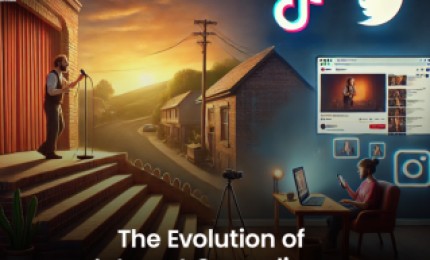In the world of entertainment, first impressions are often lasting. For actors and performers, one of the primary tools to make that impression is the headshot. A headshot is more than just a photograph; it's a window into an artist's persona, capturing their essence and potential in a single frame. Casting directors sift through hundreds, if not thousands, of headshots, making decisions in mere moments. So, what makes a headshot stand out? What are the elements that capture a casting director's attention? In this comprehensive guide, we'll explore the insider tips from casting directors on how to craft the perfect headshot, ensuring you leave an indelible mark.
In an age of filters and digital enhancements, there's a growing desire to present a picture-perfect image. However, casting directors often stress the importance of authenticity in headshots. They're not merely seeking a beautiful face; they're searching for genuine individuals who can seamlessly fit into diverse roles. Overly retouched photos can sometimes strip away the unique quirks and features that make an individual distinctive. These nuances, from the faint laugh lines that hint at a jovial personality to the intense gaze that suggests depth, can be instrumental in landing roles. Moreover, an authentic headshot establishes trust. It assures directors that they're seeing the real you, not a digitally altered version. In essence, while it's natural to want to put your best foot forward, it's crucial to ensure your headshot remains a genuine reflection of who you are.
The eyes, they say, are the windows to the soul. In a headshot, they're often the first thing casting directors notice. Eyes can convey a myriad of emotions, from the fiery passion of a protagonist to the cold calculation of an antagonist. They can hint at a backstory, suggest motivation, or reveal hidden depths. When taking a headshot, it's essential to focus on making the eyes as expressive as possible. This doesn't mean over-exaggerating emotions, but rather subtly conveying them. Whether it's the hopeful glint of an aspiring star, the steely determination of a seasoned actor, or the playful sparkle of a comedian, the eyes can communicate volumes. Additionally, ensure they're in sharp focus, drawing the viewer in and making a lasting impression.
Clothing choices in a headshot can speak volumes. While it might be tempting to don the latest fashion trends or elaborate outfits, simplicity often works best. The primary focus should be on you, not your attire. Opt for solid colors that complement your skin tone and avoid overly flashy or patterned clothing that can distract. However, this doesn't mean you can't showcase your style. If you're vying for roles in corporate dramas, a crisp shirt or blazer can hint at your suitability. For more versatile artists, neutral tones that don't pigeonhole you into specific roles are ideal. Remember, your attire should enhance your features and suggest potential, not overshadow or limit you.
While studio setups with elaborate lighting can produce polished results, there's an undeniable charm to natural lighting. The soft, diffused light of an overcast day or the golden hues during the golden hour can illuminate your features beautifully. Natural light tends to be more forgiving, smoothing out imperfections while highlighting the face's contours. Moreover, it brings out the true colors of the eyes and skin, adding to the authenticity. When planning a headshot session, consider outdoor locations or settings with ample natural light. The results can be both professional and genuine, capturing you in the best possible light.
A headshot is all about you, and the background should facilitate this focus, not detract from it. Opt for neutral, unobtrusive backgrounds that allow casting directors to concentrate solely on your face and expression. Whether it's a muted color palette, a blurred outdoor setting, or a simple studio backdrop, the background should serve as a canvas, elevating your image. Avoid busy or cluttered backgrounds that can divert attention or suggest unprofessionalism. The key is to strike a balance, ensuring the background complements the overall composition without becoming a focal point.
An actor's strength often lies in their versatility. While your primary headshot should encapsulate your essence, it's beneficial to have variations that showcase your range. Consider including shots that convey different emotions or looks. A playful smile, a contemplative gaze, or a fiery intensity can hint at your adaptability as a performer. These variations not only provide casting directors with a broader sense of your capabilities but also open doors to a wider range of roles. Remember, each headshot is a glimpse into the characters you can bring to life, so ensure they capture the full spectrum of your talent.
The entertainment industry is dynamic, and change is constant. As artists evolve, grow, or undergo changes in appearance, their headshots should mirror this journey. An outdated headshot can sometimes be a disservice, suggesting stagnation or a lack of commitment to the craft. Casting directors recommend refreshing headshots every couple of years or after significant changes, like a new hairstyle or notable weight loss. This ensures that you're always presenting a current, relevant image, aligning with the roles you're pursuing.
The difference between a good headshot and a great one often lies in professional expertise. While DIY approaches can yield decent results, professional photographers bring a wealth of experience to the table. They understand lighting, composition, angles, and most importantly, how to direct subjects to elicit the best shots. Investing in a professional headshot session can be invaluable, ensuring that the final images are not only high-quality but also industry-standard. Moreover, professionals can offer guidance on styling, poses, and expressions, ensuring that the headshot is both flattering and effective.
Every artist, whether they realize it or not, carries a personal brand. This brand is a fusion of their style, strengths, unique quirks, and the roles they naturally gravitate towards. Your headshot should be a visual representation of this brand. If you're the quintessential romantic lead, your headshot should exude that charm and warmth. If you're the versatile character actor, a neutral but engaging headshot might be more fitting. Think of your headshot as a visual resume, a snapshot that instantly communicates who you are as an artist and the value you bring to a production. It's not just about looking good; it's about looking right for the roles you're targeting.
Before finalizing your headshot, it's invaluable to gather feedback. This shouldn't just be from friends and family (who might be inherently biased) but from industry peers, mentors, or even acting coaches. These individuals can provide objective insights and highlight aspects you might have overlooked. They can point out if the headshot aligns with the roles you're pursuing or if it pigeonholes you into a specific type. Moreover, gathering diverse opinions can help you select a headshot that resonates universally. Remember, while personal preferences are essential, the primary purpose of a headshot is to appeal to casting directors, producers, and others in the decision-making process.
It's often the subtle details in a headshot that make it stand out. The slight tilt of the head, the intensity of the gaze, or even the positioning of the shoulders can convey volumes. These subtleties can hint at confidence, vulnerability, intensity, or approachability. When working with a photographer, it's essential to experiment with these nuances. Small adjustments can dramatically alter the vibe of the headshot, ensuring you capture the perfect shot that encapsulates your essence.
While there are many guidelines on what to do for a great headshot, it's equally important to be aware of common pitfalls. Over-accessorizing, choosing overly trendy outfits, or adopting unnatural poses can detract from the headshot's effectiveness. Similarly, trying too hard to fit a specific mold or type can come across as inauthentic. It's essential to strike a balance between presenting oneself professionally and ensuring the headshot remains a genuine reflection of the individual.
In the vast sea of aspiring artists and seasoned professionals, a headshot is a beacon that can draw casting directors to you. It's more than just a photograph; it's a statement, a brand, and often, the first step in securing an audition or role. Crafting the perfect headshot requires a blend of authenticity, professionalism, and a touch of artistry. By incorporating these insights from casting directors, artists can ensure their headshot not only stands out but also resonates, paving the way for countless opportunities in the entertainment industry. In an industry where opportunities are fleeting, a compelling headshot can be the difference between being overlooked and shining in the spotlight.

15 Ways to Make Money as a Singer: A Complete Guide to Monetizing Your VoiceEarning money as a singer requires more than just talent, it demands creativity, persistence, and a willingness to explore...
Read Blog
When Kunal Kamra's Humor Got Him Into Trouble: A Deep Dive into the Controversies of India's Most Fearless ComedianKunal Kamra Controversy: Laughter, Lawsuits, and the Limits of Free SpeechStand-up...
Read Blog
The Oscar race is always full of drama, but this year? It’s absolute chaos. From shocking controversies to unexpected winners, the battle for Best Picture at the 2024 Academy Awards has taken...
Read Blog
In the ever-changing landscape of entertainment, few transformations have been as dramatic and swift as the rise of internet comedians. What began as a platform for amateur funny videos has evolved...
Read Blog
Introduction: In the competitive world of entertainment and talent, having the right representation can make all the difference in launching and sustaining a successful career. Whether you're...
Read Blog.jpg)
While the world of modelling often dazzles with glitz and glam, it's also critical we discuss its darker shades, pulling the curtain back on some challenging realities. Today, let's embark on...
Read Blog